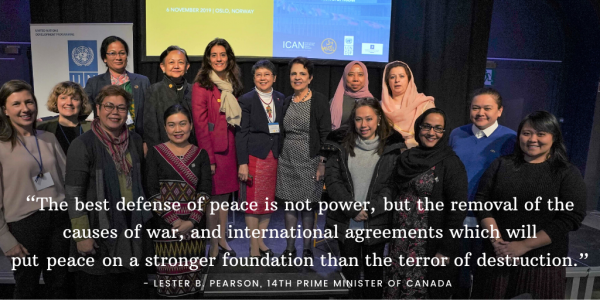It was a Canadian who first suggested the creation of the United Nations peacekeeping forces in the 1950s. Canadian former prime minister Lester Pearson, winner of the Nobel Peace Prize and father of modern day concept of Peacekeeping said, “The best defence of peace is not power, but the removal of the causes of war” and we know that women peacebuilders around the world are doing just that: removing the causes of war.

First, we need to recognize this. We need to shift our understanding of peace negotiations from being security and political processes to societal processes. With that in mind, the sharing of power, responsibility, ideas and solutions with women becomes a necessity.
Canada’s National Action Plan on Women, Peace and Security has a clear objective, mandating the “Increased and meaningful participation of women and women’s organizations and networks in conflict prevention, conflict resolution, and post conflict state-building.”
The actions needed to ensure that women peacebuilders are at the peace tables and adequately included are outlined in our own National Action Plan. The why and the how of including women peacebuilders are clear as day, research, studies and guidance are abundant. In most cases, it is the political will and strength of position that are lacking.
Often women peacebuilders are faced with resistance to being included, they are told that the “conflict parties refuse having women at the table,” but as a woman peacebuilder told me, “would they refuse if the United Nations’ mediator was a woman? Or if that women peacebuilder was forced on them by the mediation team? They would not.” It lies within the power of the mediators to include women, if only they insist.
I will, once again, refer to Pearson’s words for the torch of peace Canada is still carrying, is his: “As for the promotion of peace congresses we have had our meetings and assemblies, but the promotion through them of the determined and effective will to peace displaying itself in action and policy remains to be achieved.”